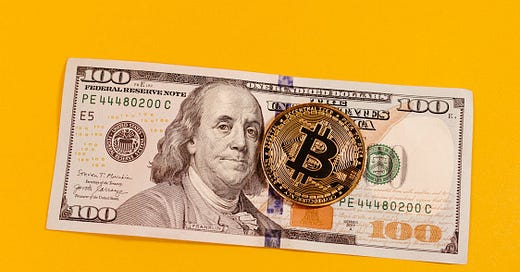How to Buy Bitcoin and Keep It Safe—Using a Ledger Wallet
Most people stop at buying Bitcoin—but that’s just the beginning. This guide shows you how to take full control of your crypto by moving it to a Ledger hardware wallet.
How to Buy Bitcoin and Actually Own It
No apps. No middlemen. Just you and your keys.
Most people buy Bitcoin through an app—and stop there.
But if your Bitcoin stays on an exchange, it’s not really yours. This guide walks you through how to buy Bitcoin and move it to a hardware wallet like Ledger, so you can protect it like a pro and actually own what you bought.
— Kayla Fort
Founder, Your Fintech Insider
P.S. This guide is for educational purposes only—not financial advice. Always do your own research before buying crypto or setting up a wallet.
How to Buy and Protect Bitcoin Using a Ledger Wallet
Your step-by-step guide to stacking sats safely and securely.
When it comes to buying Bitcoin, convenience and security don’t always go hand in hand. Cash App makes buying BTC simple, but if you want to own your Bitcoin—not just store it on an app—you need a hardware wallet like Ledger.
In this guide, I’ll walk you through two secure ways to buy and self-custody Bitcoin:
Buying directly inside Ledger using MoonPay, Ramp, or Transak
Buying with Cash App and transferring to Ledger
Whether you’re new to self-custody or want to upgrade your crypto hygiene, this playbook has you covered.
Buying Bitcoin Isn’t the Same as Owning It
If an app holds your Bitcoin, it’s not really yours.
When you buy Bitcoin on platforms like Cash App, Robinhood, or Coinbase, you’re not actually in control. What you have is an IOU—the app holds your Bitcoin for you. That means they decide when you can access it, move it, or cash it out. And if they ever freeze withdrawals, get hacked, or shut down? You're out of luck.
This is what’s called custodial ownership, and it comes with a big trade-off: convenience in exchange for control. You’re trusting someone else to guard your assets.
What Self-Custody Really Means
If it’s not your keys, it’s not your crypto. That’s the golden rule in Bitcoin.
When you self-custody your crypto using a hardware wallet like Ledger, you hold the private keys. That’s the cryptographic proof that your Bitcoin belongs to you—and no one else. It’s stored offline, safe from hacks, outages, or sudden policy changes.
Even if an exchange disappears overnight, your Bitcoin stays right where it should be: in your wallet, fully under your control.
This guide will show you exactly how to take that control—and start owning your Bitcoin the right way.
Keep reading with a 7-day free trial
Subscribe to Your Fintech Insider Lens to keep reading this post and get 7 days of free access to the full post archives.




